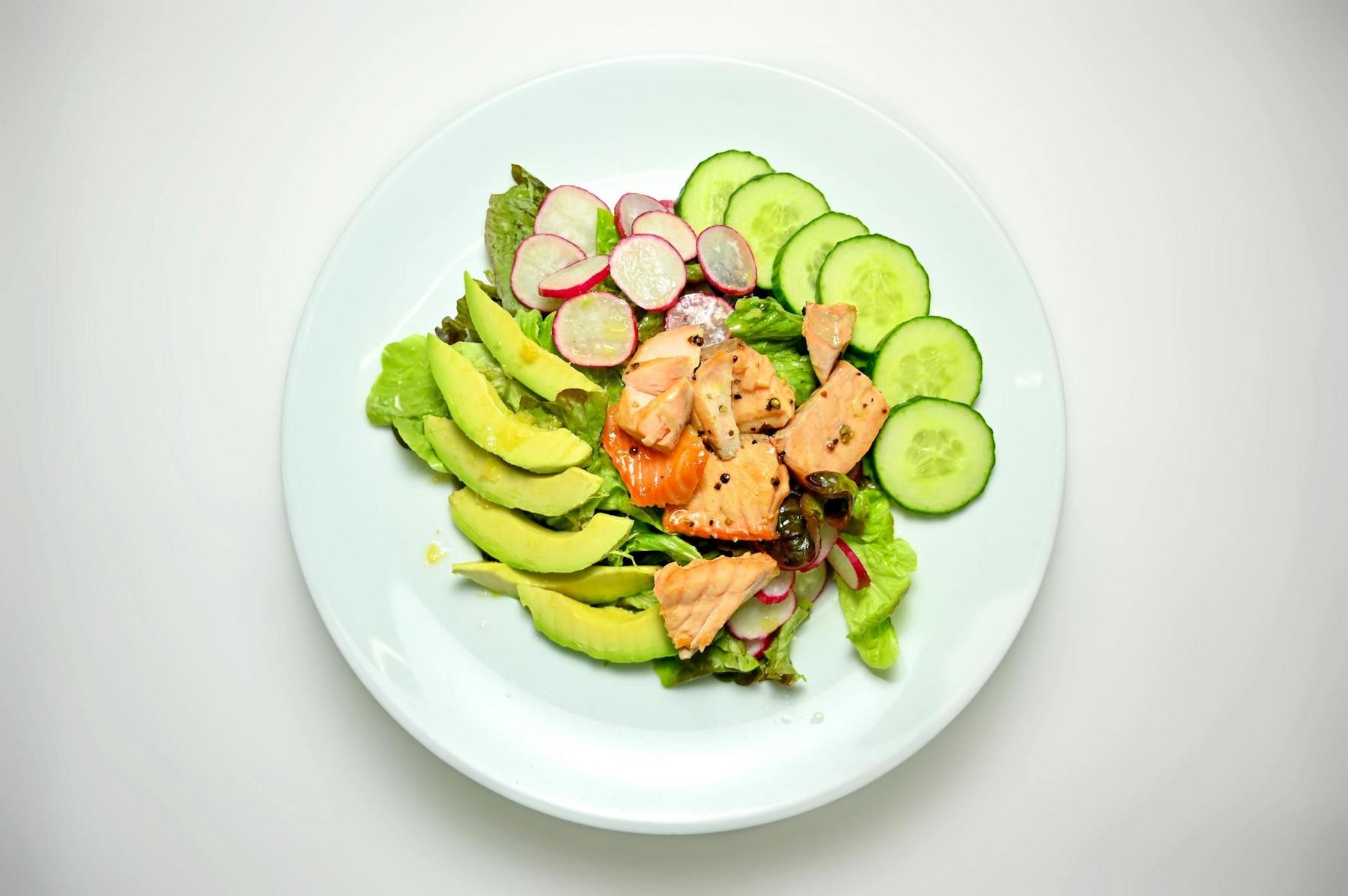Excessive sugar consumption has become a significant health concern in Australia. Current data reveals that Australians derive approximately 10.9% of their daily energy intake from free sugars—a figure that exceeds international health recommendations. This overconsumption contributes to rising rates of obesity, type 2 diabetes, and cardiovascular diseases. For those seeking to improve their health, reducing sugar intake represents one of the most impactful dietary modifications possible. But how exactly do you design an effective low-sugar diet that’s both nutritionally adequate and sustainable? This comprehensive guide explores evidence-based strategies to help you navigate the complex world of sugar reduction in 2025.
Why Is Reducing Sugar Important for Your Health?
Understanding the distinction between types of sugars is crucial before embarking on any sugar-reduction journey. Added sugars encompass all caloric sweeteners incorporated into foods during processing, including sucrose, high-fructose corn syrup, and concentrated fruit juices. These differ fundamentally from intrinsic sugars found naturally in whole fruits, vegetables, and dairy products, which coexist with fibre, vitamins, and minerals that mitigate metabolic impacts.
The World Health Organization recommends limiting free sugars—including both added sugars and naturally occurring sugars in honey, syrups, and fruit juices—to less than 10% of total energy intake, with additional health benefits observed when consumption falls below 5%.
Persistent high sugar intake disrupts glucose homeostasis through multiple mechanisms. Fructose metabolism in the liver promotes de novo lipogenesis, elevating serum triglyceride levels and promoting fat deposition. Concurrently, repeated blood glucose spikes from rapidly absorbed sugars contribute to pancreatic β-cell exhaustion and insulin resistance.
Longitudinal studies demonstrate that reducing added sugar intake by 25% decreases type 2 diabetes incidence by 18% over a decade—compelling evidence for the profound impact sugar reduction can have on metabolic health.
How Can You Identify Hidden Sugars in Your Diet?
Nutrition label literacy proves critical for identifying hidden sugars in the modern food environment. Ingredients ending in “-ose” (e.g., fructose, dextrose) or listed as syrups, concentrates, or honey indicate added sweeteners that contribute to your total sugar intake.
Hidden sugars lurk in surprising places—from savoury foods like pasta sauces and salad dressings to seemingly healthy options like breakfast cereals and flavoured yoghurts. Comparative analysis of breakfast cereals, for instance, reveals a tenfold variation in added sugar content, with some popular brands containing more sugar per serving than dessert foods.
Major sources of hidden sugars in the Australian diet include:
| Food Category | Average Sugar Content | Hidden Sugar Alert |
|---|---|---|
| Breakfast cereals | 6-30g per 100g | Look for varieties with less than 6g sugar per serving |
| Flavoured yoghurt | 10-15g added sugar per serving | Choose plain yoghurt and add fresh fruit |
| Pasta sauces | 4-12g per serving | Prepare homemade versions to reduce sugar by 40-60% |
| Condiments | 3-7g per tablespoon | Use herbs, spices, and vinegars as alternatives |
| Energy/protein bars | 12-25g per bar | Opt for whole food snacks like nuts and fruit |
| Fruit juices | 20-36g per cup | Consume whole fruits instead for fibre benefits |
Sugar-sweetened beverages constitute 19% of Australians’ free sugar intake, delivering empty calories without satiety signals. A single 375ml serving of regular soft drink can contain approximately 39g of sugar—nearly the entire daily recommended limit for many adults.
What Are the Most Effective Strategies for Reducing Sugar Consumption?
Home Cooking Approaches
Home cooking emerges as the most effective intervention for controlling sugar exposure. Processed foods contribute 68% of added sugars in typical Western diets, with sauces, condiments, and ready meals being predominant sources.
Effective culinary techniques include:
- Gradually reducing sugar in baked goods by 33-50% while enhancing flavour with vanilla or almond extracts
- Replacing refined sugars in oatmeal with mashed bananas or unsweetened applesauce
- Using spices like cinnamon and nutmeg to amplify natural sweetness in roasted vegetables
These approaches show significant promise in retraining taste preferences toward lower sweetness thresholds. Most individuals find that after 3-4 weeks of reduced sugar consumption, their perception of sweetness intensifies, making formerly enjoyed high-sugar foods seem overwhelmingly sweet.
Grocery Shopping Strategies
Strategic shopping practices provide a foundation for reducing sugar intake:
- Prioritise whole foods comprising at least 75% of your shopping cart
- Select plain yoghurt over flavoured varieties to avoid 10-15g added sugar per serving
- Choose canned fruits in natural juice instead of syrup, reducing free sugars by 50%
- Shop the perimeter of supermarkets where whole, unprocessed foods are typically located
- Read ingredient lists carefully, noting that ingredients are listed by weight (higher amounts appear first)
Beverage Modifications
Beverage choices represent a particularly impactful area for sugar reduction:
- Switching from regular soft drinks to water or sparkling water prevents approximately 39g sugar intake per 375ml serving
- Flavouring water with citrus slices, cucumber, or herbs enhances acceptability without added sugars
- Gradually reducing sugar in tea/coffee by 25% weekly allows taste adaptation within a month
- Choosing unsweetened plant-based milks over flavoured varieties saves 5-10g sugar per serving
Clinical trials indicate these beverage changes can reduce HbA1c by 0.5% in prediabetic individuals over six months—equivalent to the effect of some diabetes medications.
Which Food Substitutions Can Help Satisfy Sweet Cravings?
Whole-Food Alternatives
Incorporating naturally sweet whole foods helps satisfy cravings while providing essential nutrients:
- Frozen berries add sweetness to oatmeal with 8g fibre per cup versus 0g in table sugar
- Roasted sweet potatoes offer complex carbohydrates with a glycemic index of 63 compared to 100 for maltodextrin
- Medjool dates provide potassium and magnesium while serving as binding agents in energy balls
These substitutions not only reduce added sugars but also increase dietary fibre intake by 12-18g daily—a key factor in glycemic control and satiety regulation.
Role of Low-Calorie Sweeteners
Non-nutritive sweeteners like stevia and sucralose enable sugar reduction without sacrificing sweetness entirely. Meta-analyses confirm their efficacy in:
- Reducing daily calorie intake by 200-300kcal when replacing sugar-sweetened beverages
- Maintaining stable postprandial glucose levels in type 2 diabetics
- Supporting weight loss of 1.2-2.3kg over six months compared to sugar-containing controls
However, long-term studies suggest potential dysbiosis from chronic artificial sweetener use, emphasizing the need for moderated intake. These sweeteners may best serve as transitional tools while adapting to less sweet flavour profiles rather than permanent dietary fixtures.
How Does a Low-Sugar Diet Support Weight Management?
A well-designed low-sugar diet creates favourable metabolic conditions for weight management through multiple mechanisms:
First, reducing sugar-sweetened beverages and high-sugar processed foods significantly decreases empty calories—those providing energy without nutritional benefit. Replacing these calories with nutrient-dense alternatives improves overall diet quality while potentially creating a calorie deficit.
Second, stable blood glucose levels promote more consistent energy and fewer cravings. The glucose-insulin roller coaster triggered by high-sugar consumption can drive hunger and food-seeking behaviour even when energy needs are met. A 2024 RCT showed 58% diabetes remission rates after one year with a low-carbohydrate diet containing minimal added sugars.
Third, a low-sugar diet typically incorporates more protein and fibre—nutrients that enhance satiety. Adding 30g whey protein to a meal reduces glucose spikes by 28%, while soluble fibre from foods like psyllium husk decreases carbohydrate absorption rate by 40%.
For individuals with significant weight to lose, a structured low-sugar diet represents an essential component of comprehensive weight management. When combined with appropriate medical support, this approach offers powerful synergistic effects. medical weight loss treatments can help address the biological adaptations that often undermine dietary efforts alone, making it easier to maintain lower sugar intake through improved appetite regulation.
How Can You Create a Sustainable Low-Sugar Eating Plan?
Gradual Implementation
Evidence affirms that incremental changes—such as a 10% weekly sugar reduction—yield sustainable habit formation with minimal withdrawal effects. This gradual approach allows taste preferences to adapt naturally while preventing the sense of deprivation that often leads to rebound consumption.
A practical implementation timeline might include:
- Weeks 1-2: Focus solely on eliminating sugar-sweetened beverages
- Weeks 3-4: Begin reading labels and identifying major sources of added sugar
- Weeks 5-6: Implement cooking modifications and whole-food substitutions
- Weeks 7-8: Experiment with lower-sugar versions of favourite recipes
- Weeks 9-10: Develop strategies for social situations and dining out
Technology and Support Resources
Feature-rich mobile applications support sugar reduction through:
- Barcode scanning identifying high-sugar products during shopping
- Recipe modifiers suggesting lower-sugar ingredient alternatives
- Community forums providing peer motivation and shared strategies
Integration with electronic health records allows healthcare providers to monitor progress and intervene promptly during dietary lapses. Virtual care platforms enhance dietary adherence through continuous glucose monitoring providing real-time feedback on meal choices and algorithm-driven meal suggestions based on individual glycemic responses.
For individuals with obesity or metabolic disorders, telehealth-delivered interventions demonstrate particular efficacy, with a 2025 longitudinal study reporting 22% greater weight loss retention in telehealth participants versus standard care, attributed to enhanced accountability and personalisation.
Building a Sustainable Low-Sugar Lifestyle
Designing an effective low-sugar diet requires a multifaceted approach combining culinary modifications, informed food selection, and appropriate support. Rather than viewing sugar reduction as a temporary diet, approaching it as a gradual recalibration of taste preferences and habits creates lasting change.
The evidence is clear that reducing sugar intake improves metabolic health markers, supports weight management efforts, and reduces chronic disease risk. For those struggling with metabolic health challenges, comprehensive approaches that combine dietary modification with appropriate medical support offer the most promising outcomes.
By implementing the strategies outlined in this guide, you can systematically reduce your sugar intake while maintaining nutritional adequacy and food enjoyment. Remember that sustainable change happens incrementally—small, consistent improvements ultimately produce the most meaningful health benefits.
Skip the struggles. Our patients achieve <20.2% weight reduction with medical weight loss treatments delivered straight to their door. No clinics. No waiting. Just results. See if you’re eligible for our medical weight loss treatments – take our quiz.
Can I still eat fruit on a low-sugar diet?
Yes, whole fruits are generally encouraged on a low-sugar diet despite containing natural sugars. Unlike added sugars, the natural sugars in fruit come packaged with fibre, vitamins, minerals, and antioxidants that slow sugar absorption and provide nutritional benefits. The WHO recommendations specifically target “free sugars” rather than intrinsic sugars found in whole fruits. However, fruit juices—even 100% varieties—count as free sugars since juicing removes fibre and concentrates sugar content.
What’s the difference between the glycemic index and glycemic load?
The glycemic index (GI) ranks foods on a scale of 0-100 based on how quickly they raise blood glucose levels compared to pure glucose. Glycemic load (GL) takes into account both the GI and the quantity of carbohydrates in a standard serving, providing a more practical measure of a food’s real-world impact on blood sugar. For example, watermelon has a high GI but a low GL because it contains relatively few carbohydrates per serving. When designing a low-sugar diet, considering GL often provides more meaningful guidance than GI alone.
Are artificial sweeteners a healthy alternative to sugar?
Artificial sweeteners provide sweetness without calories, potentially helping reduce overall sugar and energy intake. Meta-analyses show they can support modest weight loss of 1.2-2.3kg over six months compared to sugar controls. However, emerging research suggests potential concerns with long-term, high-frequency consumption, including altered gut microbiome composition and potential metabolic effects. Current evidence supports their use as transitional tools while adapting to less sweet flavour profiles, rather than as permanent dietary mainstays. Natural non-nutritive sweeteners like stevia may offer advantages over artificial options, though moderation remains advisable with all sweeteners.
How quickly can I expect to notice benefits from reducing sugar intake?
Many people report subjective improvements in energy levels and reduced cravings within the first 7-14 days of significantly reducing added sugar intake. Objective metabolic improvements typically begin emerging after 2-4 weeks, with measurable changes in triglycerides, insulin sensitivity, and blood pressure. If you’re using sugar reduction as part of a comprehensive weight management strategy, physical changes usually become noticeable after 4-8 weeks of consistent implementation. However, these timelines vary considerably based on individual metabolic factors, starting health status, and the degree of sugar reduction implemented.
How does fibre intake relate to sugar metabolism?
Dietary fibre plays a crucial role in moderating sugar metabolism through several mechanisms. Soluble fibre forms a gel-like substance during digestion that slows glucose absorption, leading to more gradual blood sugar increases. Research shows that adding soluble fibre to carbohydrate-containing meals can decrease the glycemic response by up to 40%. Fibre also supports a healthy gut microbiome, which influences insulin sensitivity and overall metabolic health. Additionally, high-fibre foods typically promote greater satiety, potentially reducing overall food consumption. The recommended dietary fibre intake is 25-30g daily, yet most Australians consume only 15-20g—making fibre increase a valuable complement to sugar reduction efforts.



